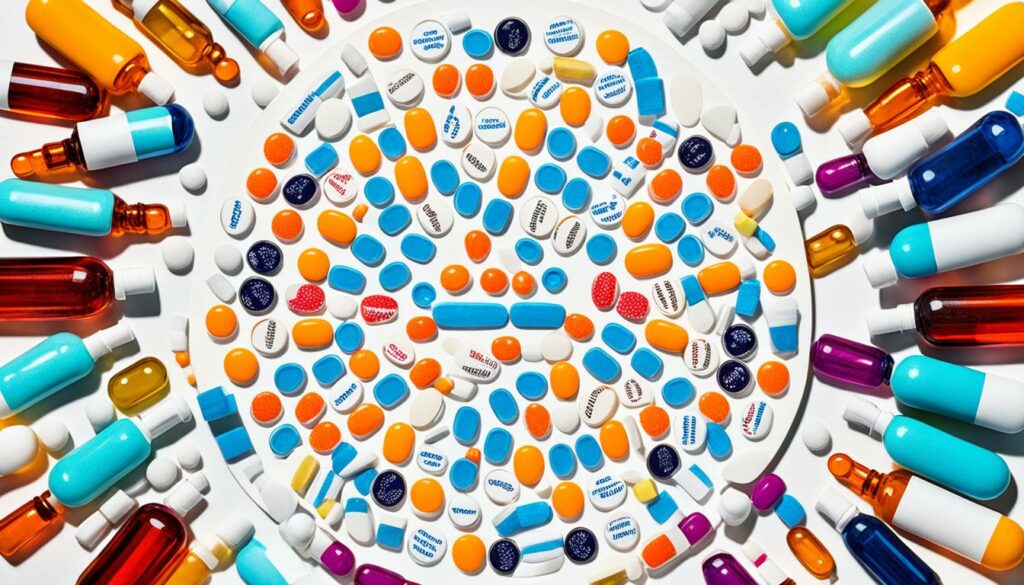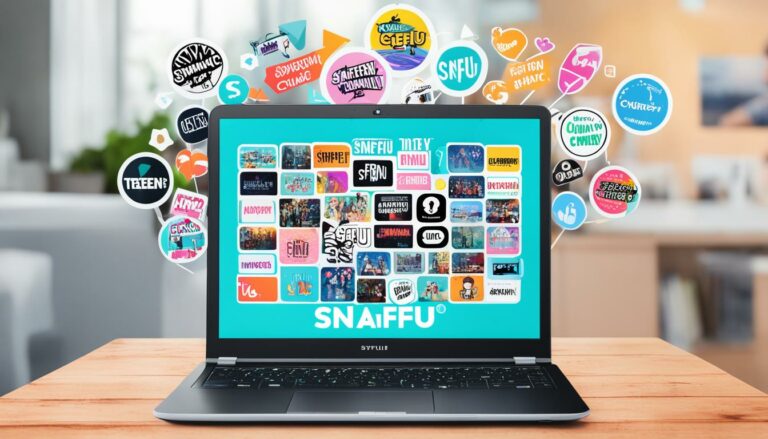Teen Drug Abuse: Most Common Nonprescription Choices
A growing concern in today’s society is the increasing number of teens engaging in drug abuse. While many are aware of the risks associated with illegal substances, a lesser-known problem is the misuse of nonprescription drugs among adolescents. According to recent statistics, a significant portion of high school seniors have admitted to abusing over-the-counter (OTC) drugs, even surpassing the use of certain illicit drugs.
One of the most commonly abused nonprescription drugs by teens is medication containing the ingredient Dextromethorphan (DXM). Found in over 140 OTC cough and cold medications, DXM poses a significant risk when misused. Additionally, teens are also found to abuse other nonprescription drugs such as laxatives, diet pills, motion sickness pills, and sleep aids.
When teens misuse these drugs, they may experience a range of effects including psychoactive effects, hallucinations, distorted vision, slurred speech, and seizures. The dangers of nonprescription drug abuse cannot be underestimated, and it is vital for parents and caregivers to recognize the signs, understand the risks involved, and take appropriate steps to prevent drug abuse in adolescents.
Key Takeaways:
- Teens are increasingly misusing nonprescription drugs, with DXM being one of the most commonly abused.
- Other nonprescription drugs commonly misused by teens include laxatives, diet pills, motion sickness pills, and sleep aids.
- Misuse of nonprescription drugs can have serious consequences, ranging from immediate effects to long-term health problems and fatalities.
- Parents and caregivers should be aware of the signs of nonprescription drug abuse in teens and take preventive measures.
- Education plays a crucial role in preventing nonprescription drug abuse among adolescents.
Risks and Dangers of Teen Nonprescription Drug Misuse

Misusing nonprescription drugs can have serious consequences for teenagers. In addition to the immediate effects such as hallucinations and impaired judgment, prolonged misuse of these drugs can lead to health problems and even fatalities.
“Nonprescription drug misuse can have devastating effects on teenagers, both physically and mentally,” says Dr. Emily Johnson, a pediatrician specializing in adolescent health. “It’s important for parents to understand the risks and dangers involved to protect their teens.”
Dextromethorphan (DXM), commonly found in cough and cold medications, is often misused by teenagers seeking a “DXM high.” The misuse of DXM has been linked to deaths and even cases of murder, highlighting the serious risks associated with nonprescription drug abuse. Other over-the-counter drugs like laxatives, diet pills, motion sickness pills, and sleep aids can also have severe health consequences when misused. These may include:
- High blood pressure and heart problems
- Kidney damage
- Dehydration
- Seizures
“Teens may underestimate the potential dangers of nonprescription drug abuse,” warns Dr. Johnson. “It’s crucial for parents to educate themselves and their children about the risks and consequences.”
Understanding the risks and dangers of nonprescription drug misuse can help parents and caregivers take the necessary steps to protect their teens and seek help if needed. It’s essential to prioritize open communication, establish clear boundaries, and be vigilant about monitoring their teens’ behaviors and activities.
Signs of Nonprescription Drug Abuse in Teens

It’s crucial for parents and caregivers to recognize the signs of nonprescription drug abuse in teens. By being aware of these signs, they can intervene early and seek help for their teens. Here are some common indicators to watch for:
- Mood swings: Sudden and extreme changes in emotions, ranging from euphoria to irritability and aggression.
- Slurred speech: Difficulty speaking clearly or articulating words, resembling the speech of an intoxicated person.
- Constricted pupils: Abnormally small pupils, even in well-lit environments.
- Excessive sweating: Perspiring heavily without any apparent physical exertion or external factors.
- Weight loss: Significant and unexplained weight loss over a short period.
- Anxiety: Experiencing excessive worry, nervousness, or restlessness.
- Lethargy: Unusual tiredness or lack of energy, often accompanied by a lack of motivation.
- Excessive energy: Unusually high levels of energy, restlessness, or hyperactivity.
- Loss of interest in activities: A sudden disinterest or disengagement from hobbies, sports, or social activities previously enjoyed.
- Excessive clumsiness or forgetfulness: Uncharacteristic physical clumsiness or forgetfulness that impairs daily functioning.
It’s important to approach these signs with empathy and understanding while seeking professional guidance. The image below provides a visual representation of the signs of nonprescription drug abuse in teens:
| Signs | Description |
|---|---|
| Mood swings | Sudden and extreme changes in emotions, ranging from euphoria to irritability and aggression |
| Slurred speech | Difficulty speaking clearly or articulating words, resembling the speech of an intoxicated person |
| Constricted pupils | Abnormally small pupils, even in well-lit environments |
| Excessive sweating | Perspiring heavily without any apparent physical exertion or external factors |
| Weight loss | Significant and unexplained weight loss over a short period |
| Anxiety | Experiencing excessive worry, nervousness, or restlessness |
| Lethargy | Unusual tiredness or lack of energy, often accompanied by a lack of motivation |
| Excessive energy | Unusually high levels of energy, restlessness, or hyperactivity |
| Loss of interest in activities | A sudden disinterest or disengagement from hobbies, sports, or social activities previously enjoyed |
| Excessive clumsiness or forgetfulness | Uncharacteristic physical clumsiness or forgetfulness that impairs daily functioning |
Parents and caregivers should remain vigilant for these signs and seek professional assessment if they suspect their teen might be abusing nonprescription drugs.
Why Teens Abuse Over the Counter Substances

Teenagers abusing over-the-counter (OTC) substances is a concerning issue that demands attention. Understanding the reasons behind their misuse is crucial for implementing effective prevention strategies. Several factors contribute to why teens abuse OTC substances.
- Easy Accessibility and Low Cost: OTC drugs can be easily purchased at most stores without raising suspicion. The relative ease and affordability make them an attractive option for teens seeking substances.
- Information Availability: Teens have access to a wealth of information regarding how to use OTC drugs to achieve a desired high. Online platforms and social media enable the dissemination of instructions, increasing the chances of misuse.
- Perception of Safety: Compared to illicit street drugs, teens may perceive OTC substances as safer and less risky. They may believe that since these drugs are available for purchase without a prescription, they pose fewer dangers.
It is crucial for parents and caregivers to educate their teens about the risks associated with nonprescription drug abuse. By addressing these misconceptions and promoting open communication, parents can play a vital role in preventing OTC substance misuse among adolescents.
Education and Prevention Strategies
Preventing nonprescription drug abuse requires a multifaceted approach that combines education and proactive measures. Some key strategies to consider include:
- Engaging in open and honest conversations about the risks and consequences of drug abuse.
- Setting clear rules and expectations around substance use.
- Monitoring and supervising teens’ activities, both online and offline, to identify any signs of potential drug abuse.
- Encouraging involvement in positive activities that promote healthy choices and interests.
- Providing support and guidance to help teens build strong coping skills and resilience.
By implementing these prevention strategies, we can create an environment that fosters healthy decision-making and reduces the likelihood of nonprescription drug abuse among adolescents.
“Prevention is the key to combatting nonprescription drug abuse in teens. By educating and empowering our youth, we can make a positive impact on their well-being and future.” – Dr. Sarah Johnson, Adolescent Psychologist
Commonly Abused Nonprescription Drugs Among Teens

In addition to DXM-containing cough and cold medications, teens also commonly abuse other nonprescription drugs. These include:
- Laxatives
- Diet pills
- Motion sickness pills
- Sleep aids
- Caffeine pills
Each of these drugs can have its own set of side effects and risks when misused. It’s important for parents to be aware of the different types of OTC drugs that are commonly abused by teens.
Preventing Nonprescription Drug Abuse in Adolescents

To effectively prevent nonprescription drug abuse in adolescents, it is crucial for parents to employ various strategies that promote awareness, open communication, and healthy decision-making. By taking proactive steps, parents can reduce the risk of their teens engaging in nonprescription drug misuse.
Educating Teens about the Dangers of Nonprescription Drug Abuse
One of the most vital prevention strategies is educating teens about the dangers of nonprescription drug abuse. Parents should engage in open and honest conversations with their teens, providing them with accurate information about the risks and consequences of drug misuse. By emphasizing the potential harm to their physical and mental health, as well as the impact on their future goals and aspirations, parents can empower their teens to make informed decisions.
Teens should also be educated about the fact that nonprescription drugs are not harmless or less risky than illegal substances. They should understand that misusing over-the-counter medications can lead to serious health problems, addiction, and even fatality.
Setting Clear Rules and Expectations
Establishing clear rules and expectations regarding drug use is another essential strategy for preventing nonprescription drug abuse in adolescents. Parents should clearly communicate their expectations about substance use, including their stance on nonprescription drugs. By setting firm boundaries and consequences, parents can create a strong deterrent against nonprescription drug misuse.
Furthermore, parents should consistently enforce these rules and ensure that their expectations are understood. Regular discussions and reminders can help reinforce the importance of abiding by these guidelines.
Monitoring Activities and Behaviors
Active monitoring of teens’ activities and behaviors is crucial in preventing nonprescription drug abuse. Parents should remain aware of their teens’ social circles, online activities, and changes in behavior. By staying involved and attentive, parents can identify potential risk factors and intervene early if they suspect drug misuse.
Monitoring can involve regular communication with teachers, coaches, and other parents to gain insights into a teen’s daily life. Additionally, parents can utilize technology, such as parental control apps or internet filters, to monitor online activities and ensure their teens are not accessing and promoting drug-related content.
Being a Positive Role Model
Parents play a significant role in shaping their teens’ attitudes and behaviors towards drug use. By being positive role models, parents can influence their adolescents to make healthy choices and avoid nonprescription drug abuse.
Parents should demonstrate responsible behavior, including avoiding the misuse of nonprescription drugs or any substance abuse. Modeling healthy coping mechanisms, stress management strategies, and effective communication skills can further contribute to a supportive and drug-free environment.
“It is crucial for parents to employ various strategies that promote awareness, open communication, and healthy decision-making.”
Parents should actively engage in their teens’ lives, showing them love, support, and guidance. By fostering a strong parent-child relationship built on trust and mutual respect, parents can create a safe space where teens feel comfortable discussing their concerns and seeking help if needed.
Recognizing the Signs of Nonprescription Drug Abuse
To effectively prevent nonprescription drug abuse, parents must be knowledgeable about the signs and symptoms of drug misuse in adolescents. This awareness can help parents identify early warning signs and promptly take action.
Common signs of nonprescription drug abuse in teens include frequent mood swings, changes in sleeping patterns, drastic weight loss or gain, lack of interest in previously enjoyed activities, declining academic performance, secretive behavior, and a sudden change in social circle. If parents notice these signs or suspect nonprescription drug misuse, they should seek help and support from healthcare professionals or addiction specialists.
| Prevention Strategies for Nonprescription Drug Abuse in Adolescents | Description |
|---|---|
| Open communication | Engage in honest conversations about the dangers of drug abuse and the importance of making informed decisions. |
| Setting clear rules | Establish firm boundaries and consequences regarding substance use, including nonprescription drugs. |
| Monitoring activities | Stay involved in teens’ lives, monitor their social circles, online activities, and behavior for potential risk factors. |
| Being a positive role model | Demonstrate responsible behavior, healthy coping mechanisms, and effective communication skills. |
| Recognizing the signs | Be knowledgeable about the signs and symptoms of nonprescription drug abuse in teens. |
By implementing these prevention strategies, parents can play a significant role in safeguarding their adolescents from the dangers of nonprescription drug abuse. It is essential to remain vigilant, address any concerns promptly, and seek professional help if needed.
Treatment Options for Nonprescription Drug Addiction in Teens
If a teen develops an addiction to nonprescription drugs, it’s crucial to seek treatment promptly. There are various treatment options available that can help teens overcome their addiction and regain control of their lives. Working closely with healthcare professionals, parents can determine the most appropriate treatment approach for their teen.
Individual Therapy
One treatment option for nonprescription drug addiction in teens is individual therapy. Through one-on-one sessions with a trained therapist, teens can explore the underlying reasons behind their addiction and develop strategies to overcome it. Individual therapy provides a safe space for teens to address their emotions, learn coping mechanisms, and develop healthier habits.
Group Therapy
Group therapy offers teens the opportunity to connect with others who are going through similar experiences. Sharing stories and listening to others can foster a sense of belonging and support. Group therapy provides a nonjudgmental environment where teens can learn from each other, gain insights, and build a strong support network.
Family Therapy
Family therapy is an essential component of treating nonprescription drug addiction in teens. It involves the entire family unit and focuses on improving communication, resolving conflicts, and rebuilding trust. Family therapy can strengthen relationships, promote understanding, and provide a supportive atmosphere for the teen’s recovery.
Medication-Assisted Treatment
In some cases, medication-assisted treatment may be recommended to manage withdrawal symptoms and cravings associated with nonprescription drug addiction. Common medications used in this treatment approach include buprenorphine, naloxone, and methadone. Medication-assisted treatment is often combined with therapy and counseling for the most effective results.
“Treatment options for nonprescription drug addiction in teens include individual therapy, group therapy, family therapy, and medication-assisted treatment.”
It’s important to note that the treatment plan for nonprescription drug addiction in teens should be tailored to their specific needs and circumstances. The effectiveness of treatment may vary depending on factors such as the severity of the addiction, the support system available, and the teen’s willingness to engage in the recovery process.
Seeking professional help is crucial in overcoming nonprescription drug addiction in teens. It’s essential for parents to support and encourage their teens throughout the treatment process. With the right treatment and support, teens can recover from addiction, develop healthy coping mechanisms, and move forward towards a brighter future.
| Treatment Options | Description |
|---|---|
| Individual Therapy | One-on-one sessions with a therapist to address underlying issues, emotions, and develop coping strategies. |
| Group Therapy | Opportunity for teens to connect with others facing similar challenges, share experiences, and build a support network. |
| Family Therapy | Involves the entire family to improve communication, resolve conflicts, and provide a supportive environment. |
| Medication-Assisted Treatment | Utilizes medication to manage withdrawal symptoms and cravings, often in combination with therapy. |
The Importance of Educating Teens About the Dangers of Nonprescription Drug Abuse
One of the most effective ways to prevent nonprescription drug abuse in teens is through education. It is crucial for teens to be well-informed about the risks and dangers associated with nonprescription drug abuse, as well as the potential consequences for their health and future.
By educating teens about the dangers of nonprescription drug abuse, we can empower them to make informed decisions and resist peer pressure. They can learn to recognize the signs and symptoms of drug abuse and understand the negative impact it can have on their physical and mental well-being.
Through education, teens can also develop the skills and knowledge to navigate situations where they might encounter nonprescription drugs. They can learn effective coping mechanisms and alternative strategies for managing stress, peer pressure, and other triggers that may lead to drug abuse.
Furthermore, educating teens about the dangers of nonprescription drug abuse helps to remove the misconception that these drugs are harmless or less risky than illicit substances. By providing accurate information and dispelling myths, we can ensure that teens have a realistic understanding of the potential harms associated with these drugs.
Parents, educators, and healthcare professionals play a crucial role in educating teens about nonprescription drug abuse. Open and honest communication, coupled with informative resources and programs, can foster a supportive environment for learning and prevention.
“Education is the most powerful weapon which you can use to change the world.” – Nelson Mandela
Benefits of Educating Teens About Nonprescription Drug Abuse
| Benefits | Description |
|---|---|
| Increased awareness | Teens learn about the risks and dangers associated with nonprescription drug abuse. |
| Empowerment | Teens gain knowledge and skills to make informed decisions and resist peer pressure. |
| Early intervention | Education helps in recognizing the signs and symptoms of nonprescription drug abuse, enabling early intervention. |
| Myth debunking | Teens develop a realistic understanding of the potential harms of nonprescription drugs, dispelling misconceptions. |
| Improved coping strategies | Education equips teens with alternative strategies for managing stress and other triggers. |
By prioritizing education, we can create a safer and healthier environment for our teens, reducing the incidence of nonprescription drug abuse and protecting their well-being.
Statistics on Teen Drug Abuse
Teen drug abuse rates have been declining overall, with the use of illegal drugs aside from marijuana being lower than in previous years. However, nonprescription drug abuse remains a concern. Statistics show that a significant number of teens abuse OTC drugs, including cough and cold medicines and pain relievers. It’s important to stay informed about teen drug abuse trends and statistics to better understand the scope of the problem.
Conclusion
Teen drug abuse, particularly the misuse of nonprescription drugs, is a growing concern that demands our immediate attention and collective action. As parents, caregivers, and members of the community, it is our responsibility to work together in preventing drug abuse among teenagers.
The key to combating teen drug abuse lies in education. By educating teens about the dangers of nonprescription drug abuse, we can empower them to make informed decisions and resist peer pressure. It is crucial for parents to have open and honest conversations with their teens, providing them with the knowledge and understanding they need to make smart choices.
In addition to education, setting clear rules and expectations is vital. By establishing boundaries and enforcing them consistently, we can create a supportive environment that discourages drug abuse. It is also important to provide access to resources and treatment for those who are in need. By offering support and compassionate care, we can help teens navigate the challenges of addiction and recovery.
Preventing drug abuse in teens requires a collaborative effort. By working together as a community, we can create a safe and healthy environment for our youth. Let us take proactive steps in preventing drug abuse, protecting our teens from the risks and dangers of nonprescription drug misuse. Together, we can make a difference.
FAQ
Which nonprescription drug is commonly abused by teens?
Medications containing Dextromethorphan (DXM), found in over-the-counter cough and cold medicines, are commonly abused by teens.
What are the common nonprescription drugs misused by adolescents?
Teens commonly misuse drugs such as laxatives, diet pills, motion sickness pills, sleep aids, and caffeine pills.
What are the signs of nonprescription drug abuse in teens?
Signs of nonprescription drug abuse in teens may include mood swings, slurred speech, constricted pupils, excessive sweating, weight loss, anxiety, lethargy, excessive energy, and loss of interest in activities.
Why do teens abuse over-the-counter substances?
Teens may abuse over-the-counter substances due to their easy accessibility, low cost, and the misconception that they are safer or less risky compared to street drugs.
What are the commonly abused nonprescription drugs among teens?
Teens commonly abuse cough and cold medications containing DXM, as well as laxatives, diet pills, motion sickness pills, sleep aids, and caffeine pills.
How can nonprescription drug abuse in adolescents be prevented?
Nonprescription drug abuse in adolescents can be prevented through open communication, setting clear rules and expectations, monitoring their activities, and being a positive role model. Educating teens about the dangers of drug abuse is also crucial.
What are the treatment options for nonprescription drug addiction in teens?
Treatment options for nonprescription drug addiction in teens may include individual therapy, group therapy, family therapy, and medication-assisted treatment.
How important is it to educate teens about the dangers of nonprescription drug abuse?
It is crucial to educate teens about the dangers of nonprescription drug abuse to empower them to make informed decisions and resist peer pressure.
What are the statistics on teen drug abuse?
Statistics show that a significant number of teens abuse over-the-counter drugs, including cough and cold medications and pain relievers.
How can teen drug abuse be prevented?
Teen drug abuse can be prevented through awareness, education, setting clear rules and expectations, monitoring, and providing support and resources for those in need of treatment.







